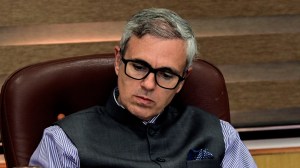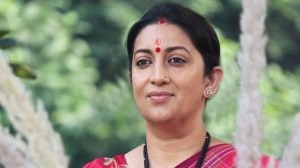Beyond the calamity code
We have a fairly detailed drill for handling natural calamities. Most flood, drought or cyclone-affected areas go through mock action plans ...

We have a fairly detailed drill for handling natural calamities. Most flood, drought or cyclone-affected areas go through mock action plans related to possible "expected" events. For agromet regions (somewhat large areas) such "expectations" can, in fact, be statistically estimated. When such events occur, two features lend urgency to the crisis.
The most important is the human suffering. The second is political in nature. Does this mean that not much can be done? There are three aspects which possibly call for fresh thinking. The first is the relocation of population and capital (houses, machines etc.). Growth and technology have a flip side too. The second feature is that the means of taking on the crisis are also improving communication, new technology, access to global experience to handle the events etc. The third aspect that may need looking into is that environmentally unsustainable development in calamity-prone regions may cause more havoc. When the cyclone hit the Saurashtra Coast, the severitywas intense. At the end of 1982 when the last major Vavajodha hit the coast, I was walking the proposed Kutch branch of the Sardar Sarovar system; on the way back the winds had the intensity of 90 km/hr. This time it was 150 km/hr. I was in a village in northwest Ahmedabad district, 200 kms away from the coast. The intensity was severe.
The question of assessment and communication is important. The lack of facilities in rural areas is very seldom understood outside. There are a few cyclone-prone areas in the country which have modern cyclone warning facilities and systems. Andhra is a case in point; facilities and systems built up with Central, State and World Bank help. Saurashtra is not one of them. At 150 kms/hr, the damage is intense. As the Home Minister said, we have now to provide for such eventualities. Last year, worried over the neglect of the "dariyakantha" talukas, I had approved an Ocean Science and Techno-logy Cell at Bhavnagar University with a budget of Rs 5 crore. Its activist VC,Vidyut Joshi, should be supported with the necessary expertise to build up not only the systems but also the organisational interfaces with the community to provide lasting solutions.
Community interfaces are important for another reason. This is a country of great regional diversity. As I argued on June 10, groundnut farming in Saurashtra is well organised and the season starts much earlier than in the North, with fields well prepared and fertiliser heaps well laid out. The Gir and Kankrej varieties of its cattle wealth are expensive and all that will need support. Timing and local details are of the essence in such matters. The Home Minister made the important point that such terrible adversity can, to an extent, be turned to advantage, if we plan for the future. In particular the reconstruction aspect is important. There are technologies with which we can construct for cyclone or flood-prone areas. CSIR’s Structural Engineering Research Centre at Chennai has the expertise. Now is the time to minimisedamages in the future.
Another way of popularising the weather and environment in our community psyche is to involve NGOs in developing an interface with the weather boys. The Charotar Vidya Mandal at Vallabh Vidyanagar had developed a scheme to interface the medium-term weather forecast with the farming community in the Kaira area. But this can be done on a much larger scale. After all it has taken crores of rupees to develop the five-day forecast for each agromet region. The weather is a matter of life, and most unfortunately, sometimes of death for all of us. One hopes that the insurance reform will mean that some enterprising companies will do the acturial calculations and provide cover for the assets and activities the calamity codes can’t cover like costly groundnut farming or the Gir and Kankrej wealth of the Bharwads who they say are descended from Kanhaiya.
Above all, we have to see all of this as a joint endeavour. If the attempt becomes one of scoring points or, worse, of fixing haplessindividuals the job will be badly done. The tendency then will be to "close ranks" or cover up. Apart from cases of gross negligence, the purpose of assessments should be to build a better future. The cost of all calamities is terrible. We must deal with them quickly and effectively.
Generally, tribal agriculture is seen as an area where progress is slow. Invariably, the agroclimatic situation is seen as a hindrance; also the farming tradition. Work done by the Ramakrishna Mission and other agencies has demonstrated the counterfactual. Given the preconditions and support, modern practices prosper. The first relocated villages from the Narmada Valley, for example, successfully cultivated Shanker 6, which at that time was very modern cotton farming. Recently on a field visit to the Arravalli ranges bordering Madhya Pradesh, Gujarat and Rajasthan, it was sheer pleasure to see the progress made. Irrigation projects had been remodelled to provide some assured water, which was being supplemented with oil-firedtubewells.
Fifteen years ago the area was under low-yielding maize cultivation and was very poor. Now lush green. Paddy, cotton, tuer and banana. The adivasi was very clear that when more water is available, cash crops would go up. Cattle wealth had improved and there were milk collection centres. Children were better fed. As usual, some communities were doing better than others. The Rathwas sent their girls to school more often, but some of the other adivasi groups didn’t, so enrollment rates were going up, but were still low. They had more control on nature.







- 01
- 02
- 03
- 04
- 05
























